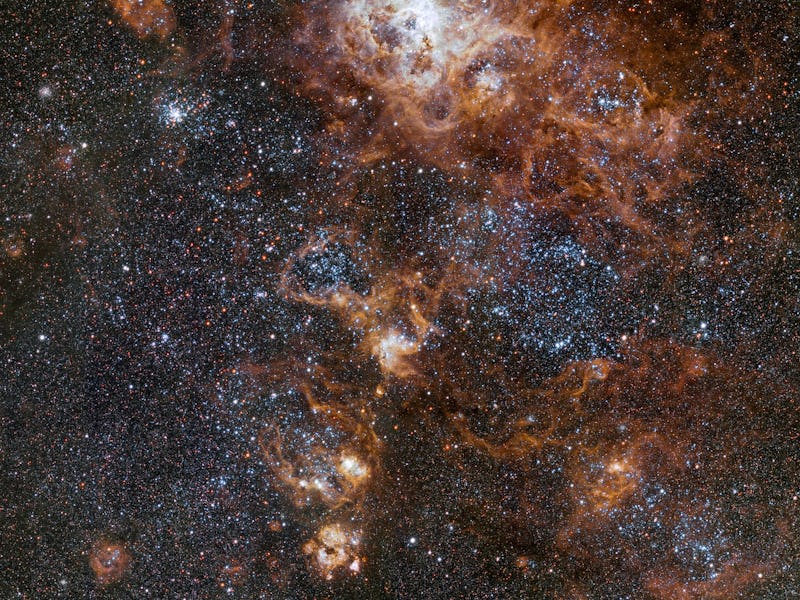The European Southern Observatory has captured the sharpest image ever of a spectacular nearby nebula, using an incredibly powerful telescope. The Tarantula Nebula, located 160,000 light-years away, is the brightest and most energetic star-forming region in the over 30 galaxies that form our Local Group. The image, released Wednesday, shows the graveyard of great supernovas alongside the birthplace of numerous star clusters.
The nebula, located at the top of the image, is more than 1,000 light-years wide. With its bright light and broadly-arranged stars that resemble spider’s legs, French astronomer Nicolas-Louis de Lacaille recorded its existence back in 1751. At its heart is the star cluster NGC 2070, whose core R136 has some of the biggest and brightest stars known to scientists. It all lies as part of the Large Magellanic Cloud, a dwarf satellite galaxy of the Milky Way that spans 14,000 light-years wide. The nebula also played host to the closest supernova ever observed since telescopes were invented.
The image in full.
The team used the aptly-named Very Large Telescope located at the Paranal Observatory in Chile, which earns its title by being the largest telescope in the world for surveying the skies in visible light at eight feet six inches, with a total field view twice as broad as the full moon.
The image was created using the 256-megapixel OmegaCAM to capture using four colored filters, one of which isolates the red glow of ionised hydrogen. This allows scientists to measure the H-alpha emission line created when a hydrogen atom’s electron loses energy, a feature of hot young stars that provides information around molecular clouds.
Since the VLT’s establishment in 1998, it’s played host to a number of impressive scenes. These include images of supergiant red star Antares, research that helps prove Albert Einstein’s theory of general relativity correct, and long-exposure shots showing telescopic lasers in action.
The VLT Survey Telescope.
It’s a far cry from the technology used in the past. The Hodge 301 star cluster inside of the nebula was first observed by British astronomer John Herschel, who in 1836 used an 18.6-inch reflector telescope to capture the spectacle from the Cape of Good Hope in South Africa. Going further back, the blue NGC 2100 cluster located to the left of the nebula was first observed in Australia by Scottish astronomer James Dunlop in 1826, who was using a reflecting telescope he made himself that measured just nine inches.
These new advancements can help scientists study the area as it develops. The “Seahorse of the Large Magellanic Cloud,” located at the center of the image inside nebula NGC 2074, is a beautiful formation measuring 20 light-years long, five times further than the distance between the Sun and nearest star Alpha Centauri. It’s also set to disappear over the next million years as lights and winds from new stars blow away the old. Herschel, who also discovered the NGC 2074 nebula, would have probably struggled to capture this process in such fine detail.
